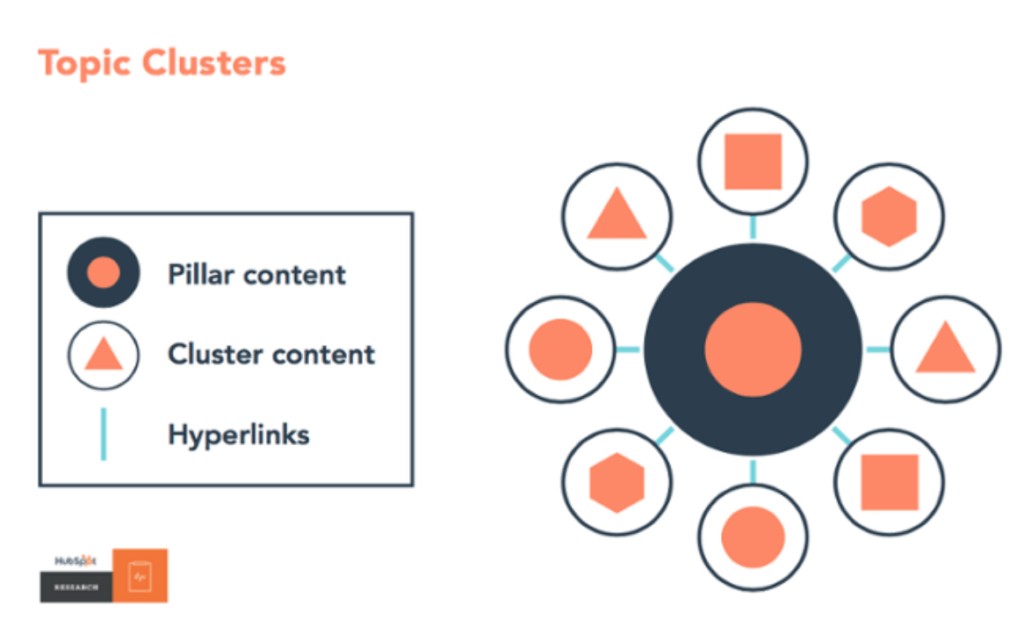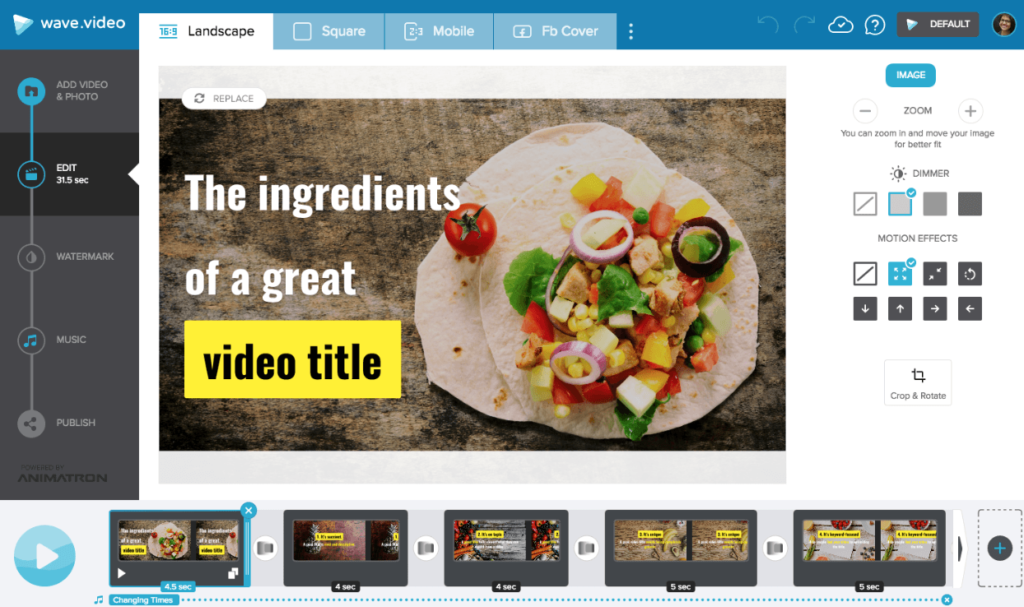We can bet you’ve read lots of expert roundups listing tools and tips to boost your content marketing. But how many of those do you come away from feeling like you’ve actually learned something new?
Well, we hope that this post will be different! Recently on the Quuu blog, we’ve been discussing how and why you should continually repurpose your top-performing content. To wrap up the discussion, we asked nine super qualified content marketers (all legitimate professionals in their field, rather than self-proclaimed gurus/ninjas/chosen ones) to share their favourite content repurposing tools and strategies for making the most of every piece of content they create.
Read on for some original ideas and actionable approaches that you can implement in your content strategy today.
(Once you’ve got your tools, check out these 10 ideas to repurpose old content!)
Brittany Berger , B2B Content Strategist
, B2B Content Strategist
I really love using Airtable for building an organized content database that helps me keep track of breaking down larger pieces of content into smaller repurposed pieces. When you’re repurposing a lot, you end up with so much more content to keep track of. And since some of the big reasons you’re repurposing content are to save time and get more use out of content, you want to make sure that it’s all easy and fast to browse through, and you can find the content you need.
For example, when I film a new in-depth YouTube video, that turns into one blog post, plus a shorter video of each individual talking point broken down, and then each of those several pieces of content have their own promo posts for social media. I’ll want to use each of those promo posts more than once, and use or reference the blog post and videos whenever relevant. So I want the links to be easy to find. Airtable’s ability to link different lists and collections together makes it easy to have databases of my videos, blog posts, tweets, etc., but still have everything threaded together by overall campaign or topic.
Shane Barker, Influencer Marketer & Consultant
Repurposing old content for your websites or blog posts is a popular strategy to increase web traffic. When you take your old content and repurpose it, it strengthens your marketing strategy. And giving a new life to the old content can really benefit your business.
You can increase your customer base by repurposing your old content. By updating your old content in a new format, you can reach out to a never found new set of audiences. By reusing and optimizing your old content in different new formats, it can significantly increase traffic and organic visibility.
I personally prefer the strategy of using social media for reusing, posting, and sharing old content. If the strategy is implemented correctly, it will increase your engagement rate and customer base. Finding the right social media management tool is important for repurposing your old content and to plan a posting schedule.
There are various tools available for efficiently reusing and repurposing your old content in a new format. Scheduling platforms like Buffer and MeetEdgar are my personal favorite content repurposing tools. For those who are just starting out, Hootsuite is the best scheduling platform. Even beginners can upload text, hyperlinks, and images. And it allows you to track your interactions with the software.
The MeetEdgar tool has been very helpful for me to recycle my old content. It has a feature called “Library,” which allows you to add links, images, or graphics. After which you can command it to share the content on any social media platform of your choice.
Buffer is another great social media scheduling tool. It allows you to post on LinkedIn, Pinterest, Facebook, Google+ and Twitter. The best feature of Buffer is that it automatically shares the post at a time which is best for the account.
Alaura Weaver , Copywriter & Content Strategist
, Copywriter & Content Strategist
My favorite repurposing tool? Airstory, the writing platform created by Joanna Wiebe and Lance Jones of Copy Hackers. This is how I use it:
- I copy research using Airstory’s web clipper extension on Chrome.
- Because I’m such a research geek I usually have way more research than my word count requires on blog posts, so there’s unused clips waiting for me in my Airstory research library.
- I’ll create new blog posts by expanding on subheadings of older posts. For example, let’s say I’m doing a high level post on creating user personas: chances are, I’ll have a section about competitor analysis within that post, so I’ll take that section and write an entire post just about competitor analysis.
Claire Trévien, B2B Content Marketer
I’ve been trying to get into more of a LinkedIn video habit and one tool I’ve found helpful for this is BIGVU’s reporter app – which is essentially a teleprompter app. You can copy and paste your text into the app and it’ll scroll down the screen (at the speed you want) while you talk. I’ve been using the free version but I’m thinking of upgrading as on top of teleprompting, it also adds automatic subtitles to your video, which is a huge time saver!
One repurposing use for this is that it’s a great way of giving a preview of a blog post you’ve written! To do this, pick a few choice moments from your post, paste the text into your app, and then press play to share the details on camera.

What’s good about this method is that you’re less likely to forget that ‘one important thing’, and you also save time, as you’re less likely to fluff your lines. Another advantage is that concentrating on the text means you have less time to look at yourself in the camera and feel self-conscious. After all, perfectionism is the enemy of getting things done!
You don’t have to limit yourself to uploading that video on LinkedIn either – it’ll look great on all sorts of networks, including Facebook, Instagram and YouTube. Do add it to your blog post too, (if your platform allows it), so that people can get a quick taster of your post.
As for the video itself, my advice is: keep it short (1 minute or so), and don’t forget to smile!
Nichole DeMeré , Community Growth, Zest.is
, Community Growth, Zest.is
I recommend repurposing your evergreen content, such as e-books, into other high-level content pieces, such as webinars, training sessions, podcasts, and slide decks.
What this looks like in action…
I wrote an e-book on How to Align SaaS Content Marketing and Product Management and then I created a colorful slide deck for a live Forget the Funnel presentation based on the e-book. I also discussed content from the e-book on a podcast for Content Love.
In general your evergreen content should act as a pillar piece for other pieces of content.

I wrote about this methodology on HubSpot’s Think Growth blog in Startup Founders, This is How to Do Content Marketing from Day 1.
As I mentioned in the article:
Yes, quality content is King, but more like the King on a chessboard. You have to have him, or you lose the game. But to win the game, you need a few more pieces to support the King.
Haim Pekel, CEO at Press on It Growth Hacking and Digital Marketing Agency
The way I repurpose content is by answering questions on a platform like Quora, Slack, or social media groups. I found that answering questions is the best way to get some traction for future blog posts prior to writing them.
It makes a lot of sense, when you’re writing something that brings value to someone and then you notify them that you published it on another platform, you’ll get their support.
Here’s an example:
#1 I wrote this answer on Quora and got a lot of upvotes.
#2 I later wrote a post on LinkedIn, got shares, likes and even discussed the subject with Sean Ellis (the guy who coined the term growth hacking).
#3 After that I was approached by a magazine called Hackernoon, they wanted to publish my Quora answer, but I sent them a link to my LinkedIn post which contained the post I wrote.
Suffice to say that it brought exposure to my agency and resulted in new clients.
The repurposing here was question to post to magazine, and not necessarily changing the format. Although I can definitely change the format to get additional bang per my words.
I’m a growth hacker by profession; tools are nice, but methodologies and reader activation are better.
Olga Bedrina, Content Marketing Manager at Animatron
At Animatron, we have found video to be one of the most powerful content repurposing instruments. For every new blog post that we put on our blog, we create a short video. We would create a video with the main ideas from the post, a teaser with the post title to share on social, or a short clip supporting a certain part of the post.

We “drink our own champagne” and create all videos in Wave.video. Here’s how I did it for one of the recent blog posts.
- I come up with a video concept.
- I write down the text that I want to add to my slides (like a script). Since it’s best not to put too much text on video, I stick with the subheaders and a short description for each.
- I choose a background for my slides and add text from step #2. Since Wave.video has a built-in library of stock footage, it’s pretty easy to do.
- I select music to accompany the video clip. The music is also provided by Wave.video.
- I download the final video, upload it to YouTube and embed it into the blog post. YouTube gives yet even more exposure to the video, driving traffic back to our blog.
- I also share the project with our social media manager. He will resize the video to square or any other necessary format and share it on social. We will also embed the same video into the presentation that we are going to put up on Slideshare, based on the blog post.
Creating a video for our blog posts helps us with content distribution, SEO, and engagement on social.
Ryan Robinson, Content Marketing Consultant
I’m a big fan of repurposing episodes of my podcast into the framework for what will become long-form  posts for my blog or for content that I can use to quickly write posts for different publications I contribute to—like Forbes, Entrepreneur or Fast Company.
posts for my blog or for content that I can use to quickly write posts for different publications I contribute to—like Forbes, Entrepreneur or Fast Company.
I don’t publish copy & paste transcripts of my episodes as blog posts, but I’ve found that getting the episode transcriptions done first helps immensely with my writing process. I use Temi to quickly upload the audio files of my podcast episodes, and their speech recognition software takes about 5 minutes to deliver the episode transcript. It’s surprisingly accurate, especially when my guests and I are able to record in a quiet space with quality microphones.
What I like most about this app is that is saves me a ton of time. Instead of waiting days to get a transcript back from a freelancer, I’m able to instantly get that content before my episodes even air—that helps me compile the show notes, and start planning for content pieces I’ll begin pitching to my publication columns.
Hans van Gent, Content Marketer and Founder of Inboundrocket
Great content marketers know that they should get their content seen by as many people as possible. Content repurposing or stealing from yourself, as I like to say it, is, therefore, one of the fastest ways to grow your audience over multiple channels.
 You can combine a couple of blog posts into an eBook and sell it on Amazon, you can use your content to answer questions on Quora, you can make a SlideShare presentation out of a piece of content, but my personal favourite must be the usage of Anchor.
You can combine a couple of blog posts into an eBook and sell it on Amazon, you can use your content to answer questions on Quora, you can make a SlideShare presentation out of a piece of content, but my personal favourite must be the usage of Anchor.
Audio consumption is only growing; podcast listening grew by 23% between 2015 and 2016, 21% of Americans ages 12 and up have listened to a podcast in the past month, and weekly podcast listeners consume five shows per week on average.
So how can you and your company make the most of this growing trend? That’s where Anchor comes into play.
Anchor takes the creation of podcasts to the masses. Not only do they make it easy to create a piece of audio using your mobile phone, but they can also automatically submit your recordings as podcasts to the big players like iTunes Podcasts, Google Play Music etc. and on top of that, it gives a unique possibility to interact with your listeners.
So the next time you write that piece of content and hit publish, maybe try reading your content out loud and recording it to bring it to a completely different audience.
Tawanna B. Smith, International Speaker and Travel Influencer at MGT Travel Media
Live video is one of the fastest growing content delivery vehicles for online marketers. The medium provides an opportunity for content creators to engage directly and immediately with their live audience. However, once the live broadcast has ended, savvy marketers understand that in order to get more bang for their content buck, they have to repurpose their content across platforms where their target audience is hanging out.
 The biggest obstacle to sharing said content is time, the precious resource that more of us want but can rarely find. Fortunately, developers like Hani Mourra of Repurpose.io feel our pain. He understands the benefits of content repurposing and how much time it can take when done across multiple platforms.
The biggest obstacle to sharing said content is time, the precious resource that more of us want but can rarely find. Fortunately, developers like Hani Mourra of Repurpose.io feel our pain. He understands the benefits of content repurposing and how much time it can take when done across multiple platforms.
Repurpose.io was designed for the active podcaster and live video broadcaster. As soon as I learned about this third-party tool for Facebook Live videos, I had to get my hands on it. Prior to using Repurpose.io I was creating workflows for my VA to take my live videos and upload them to YouTube, place it on my blog or even run them through video editing software to grab the audio file.
It was a process that I needed to first figure out for myself and then train her on how to implement.
Now with the click of a button, I can repurpose my Facebook live videos automatically to YouTube (no downloading, then uploading needed); create an audio file on Soundcloud, send a file to Google Drive or forward the file to Dropbox. All that’s required is that I connect all of these platforms to the Repurpose.io platform in addition to my Facebook account. The software will pull live or pre-recorded videos from either my personal profile or my business page and send it to any of the platforms that I specify after I create a simple workflow.
Once you set everything up the first time, including all your workflows such as Facebook Live to YouTube or Facebook Live to Soundcloud, etc., you can either have the repurposing done automatically or you can manually do it after your live video.
To take my repurposing up a notch, I also use Hani’s repurposing tool for blogs: Simple Social Press (SSP). This tool allows me to automate the repurposing from Facebook Live directly to my website. Simple Social Press creates a new blog post on my site every time I go live on my page. I have the settings programmed to create a draft post so that I can approve before publishing and fill in all the backend metadata but if I wanted to, I could have the software just publish a blog post after every time I went live. All that’s required is the SSP plugin and connection to my Facebook account through the program.
With these repurposing tools my one piece of content (the live video) can easily become available across several platforms without any extra effort or time.
Have you got a favourite tool or strategy that hasn’t been mentioned here? We’d love to hear it!







That was one of the most helpful articles I have read in weeks. I have a notebook page full of follow-ups. THANKS.
So glad you enjoyed this Joe! I also learned TONNES from putting this together 🙂
Indeed, what Joe said. An extremely useful post. Thank you for taking the time to create it.
That means so much to us Tim 🙂 Thank you for letting us know your thoughts!
Hi Lucia – I’ve taken away so much from a single post. I can’t wait to try these great platforms to nail content repurposing.